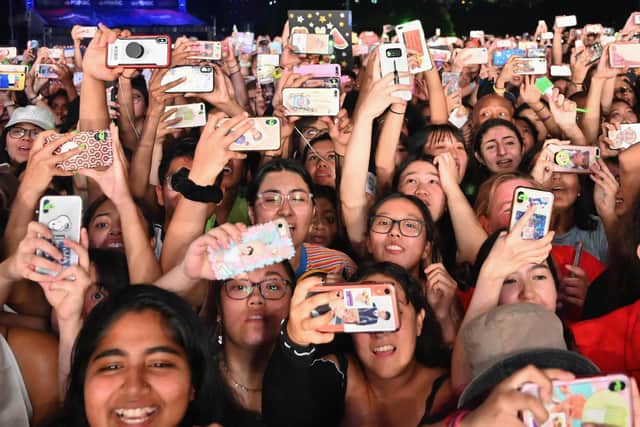Backlash against influencers could help people live their lives, rather than filming them – Stephen Jardine
Nostalgia is a dangerous thing. It’s easy to look back at the past through rose-tinted spectacles but the reality is rather different. Fifty years ago, a tenth of homes still only had access to an outside toilet and a third had central heating. Since then, health outcomes have been transformed and technology has revolutionised our lives. Life is undoubtedly easier but that doesn’t necessarily mean it is better.
Half a century ago, only 40 per cent of the population had a home telephone. Last year Ofcom revealed a fifth of toddlers have a smartphone. That transformation is undoubtedly changing society but it’s happening without a fundamental discussion of the consequences.
Advertisement
Hide AdAdvertisement
Hide AdOne of the most striking images of 2024 so far is the video from Paris of a sea of smartphones held high to capture the start of the New Year on the Champs Elysees. As midnight struck and the fireworks started, almost nobody hugged or kissed. They were completely focussed on capturing a moment they will probably never view again and no one will look at on social media.


Modern-day grifters
For context, I looked back at the footage of Millennium Hogmanay night in Edinburgh. Pre-smartphones and social media, it was a very different picture with the vast crowd focussed on the moment and the spectacle through their eyes, not a lens.
No one wants to go back to the days of having to wait a week for your holiday snaps to be developed by the chemist only to discover you hadn’t loaded the film properly and none had come out. But we need to understand the difference between image and reality. The obsession with capturing everything is being driven by the ease of the technology but also by people who smell an opportunity.
Instagram influencers are the modern-day equivalent of the grifters who 50 years ago made a living selling time shares. Nowadays their schtick is promoting brands without really making that clear and squeezing free food, clothing and travel from PR firms not willing to do their job properly. The resultant images of picture-perfect lifestyles raise impossible expectations and have helped fuel a mental health crisis amongst youngsters who have only ever known a digital world.
Influencers hanging about outside
However there is a ray of hope. Online influencers have begun bleating about how they are starting to be turned away from some places. Realising their real customers may not want to be barged aside by a giant selfie stick or featured in a video while eating their lunch, certain museums, shops and restaurants have started cracking down on film and photography.
Instead of ignoring those places, the current trend is for the influencers to hang about outside filming themselves speculating about how amazing it must be inside. So in one fell swoop, these businesses have saved themselves from the hell of TikTok while ensuring they remain a hot place to visit.
Hopefully, more and more places will realise they offer something that is best experienced for real, rather than through the eyes of someone who thinks Alan Whicker is a type of furniture. Denied the chance to photograph everything from the Mona Lisa to what we had for breakfast, we might then get on with the business of living and enjoying the one shot at life we have. After all, there is no repeat.
Comments
Want to join the conversation? Please or to comment on this article.